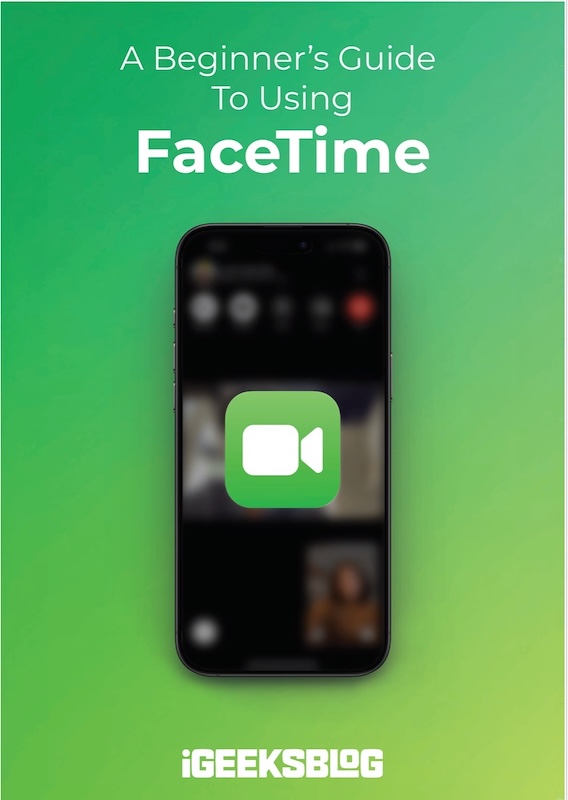
FaceTime Like a Pro
Get our exclusive Ultimate FaceTime Guide 📚 — absolutely FREE when you sign up for our newsletter below.

FaceTime Like a Pro
Get our exclusive Ultimate FaceTime Guide 📚 — absolutely FREE when you sign up for our newsletter below.
Apple’s iOS 26 brings big changes, but many iPhone owners are frustrated. From Liquid Glass to battery drain, here’s why the update is sparking backlash.
Apple’s iOS 26 is here, and it’s one of the biggest iPhone updates in years. Features like Call Screening, Live Translation, and smarter app improvements should have been the highlights. Instead, the new Liquid Glass design has stolen the show —mostly for the wrong reasons.
Across forums, X (formerly Twitter), and tech blogs, users are voicing frustration. Some say it makes their phones feel futuristic, while others complain it makes them nearly unusable. Here’s why so many iPhone owners are hating iOS 26 right now.
Liquid Glass was supposed to make iOS look modern and alive, with reflective icons, bouncy animations, and translucent menus. Instead, many find it distracting and hard to use. Animations feel slow and make older iPhones sluggish; the constant color shifts and glow effects are overwhelming, and basic actions now take more taps than before.
Critics compare it to a “Barbie phone” or “a neon filter gone wrong,” while some say it feels like Apple turned the iPhone into a toy. Sure, there are fans who call it “fresh” and “fun,” but for many, it’s design for design’s sake, getting in the way of just using your phone.
The translucency behind menus and tabs has become another pain point. People don’t like seeing blurred remnants of apps in the background, and it also makes reading harder.
Notifications blur into backgrounds, making them hard to check; icons sometimes look cartoony or blurry, and menus shine with frosted-glass translucency that hides more than it shows. Many users complain that the contrast is so weak it’s tiring to look at for long periods. Apple did tweak things during beta, but even after release, text legibility is still one of the most common complaints.
Within hours of updating, users noticed battery life tanking. Apple confirmed that iOS 26 does heavy indexing in the background after installation, which temporarily drains power. But that doesn’t stop the frustration when your fully charged phone can’t make it through the day.
Additionally, rendering a UI like Liquid Glass consumes more battery than necessary. With the iPhone Air and its Liquid Glass UI, Apple aims to make the device feel like you are holding a block of glass, but this comes at the expense of practical aspects like battery life.
Beyond its appearance, the update itself is substantial. iOS 26 requires 6–12GB of free space, depending on your device. That’s a lot to clear out just to install it. That means deleting apps, photos, or files just to make room for the update. For people with smaller storage models, this alone is a dealbreaker.
Animations and effects hit performance differently depending on the device. Some iPhone 11 owners report “smooth and fast” usage, while others with the exact same phone call it “terrible.”
The flashy design isn’t lightweight: older phones especially feel slower, and the whole experience can feel like style was prioritized over speed. One viral post summed it up: “Why does my phone feel like it’s choking on sparkles?”
Apple promised more personalization, but in practice, it feels half-baked. iMessage backgrounds change for everyone in a group if one person tweaks it, which nobody asked for. Dark Mode icons now glow strangely in one corner, making them look off-balance. Spatial wallpapers with 3D motion look cool at first, but quickly become dizzying.
Additionally, adjusting the app icon theme temporarily or sometimes permanently breaks the icons, requiring you to change the theme again to fix it.
Users love customization when it gives control, but iOS 26 often feels like it takes that control away.
Even basic workflows have been disrupted. Screenshots now pop up as massive previews instead of small thumbnails, cluttering the screen until you swipe them away. Dark Mode icons glow oddly, making them look tilted or unfinished. Everyday actions take longer and feel clumsier, making the phone less intuitive than before. One annoyed user said, “Apple broke what wasn’t broken and called it innovation.”
Not everyone hates iOS 26. Some enjoy the playful, nostalgic feel of Liquid Glass. Notifications and lock screen animations do look livelier. For these users, iOS 26 feels like Apple rediscovering its fun side.
But critics argue it’s messy, inconsistent, and battery-draining. Like iOS 7’s shift to flat design, the backlash may fade with time—but for now, the reaction is deeply divided.
If you hate iOS 26, you don’t need to upgrade immediately. iOS 18 still receives security updates, and many of iOS 26’s changes can be toned down in Accessibility settings. Downgrading to iOS 18.6.2 is possible, but it’s complicated and wipes your device clean. For now, iOS 26 is Apple’s most controversial update in years, bold for some, unbearable for others, and impossible to ignore.